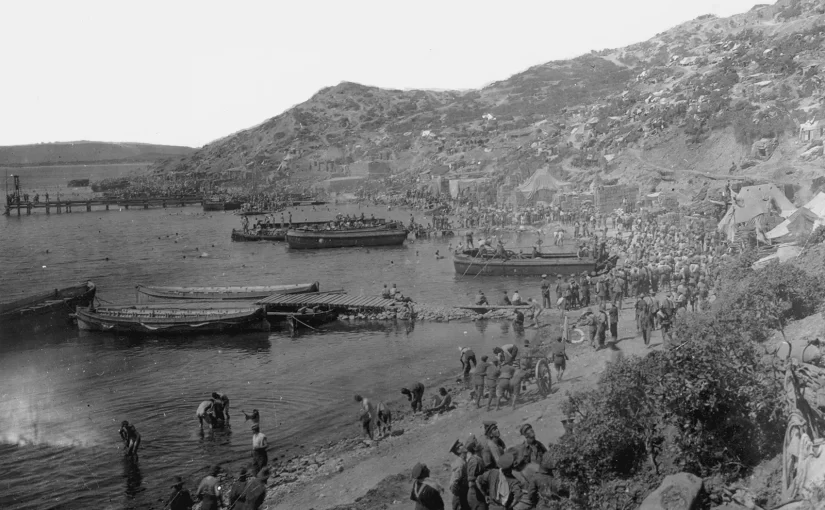As the Ottoman Empire joined the Central Powers, the war against Russia in the Caucuses had reached a stalemate. One thing Russia desperately needed was supplies. First Lord of the Admiralty, Winston Churchill, believed that they needed to secure the land around the Dardanelles Strait, which would then lead into the Sea of Marmara and the Black Sea beyond, allowing a secure supply line to Russia. It could also possibly help the Western Front, by opening up a new front to divert the German forces onto 3 fronts.

The first attempt at securing the strait was on March 18th, 1915 via a naval attack through the straight in an attempt to take out the Ottoman artillery guns. However, Ottoman sea mines had been placed in the strait and that, combined with the Ottoman gun fire, sank 3 battleships and the ships eventually had to retreat. On the 25th of April, 75,000 troops, comprising of French, British, Australian and Kiwi troops, commanded by General Ian Hamilton landed on the beaches of the Gallipoli Peninsula. Despite not having proper landing craft, instead having to row over, a decent beach head was formed.
The Anzac forces had landed North of their intended target and were now inside a cove. Due to their valiant efforts, the cove was named Anzac Cove.

However, once the beach head was formed, trench warfare soon began to set in. What made the trench warfare here worse was the glaring sun and the dysentery epidemic. Hamilton ordered another 60,000 men to attack Suvla Bay from the water. However, due to hesitation from Allied high command, the Ottoman’s had managed to dig defences and the bay was eventually recaptured by Mustafa Kemal Pasha on August 10th. The attempt to break the stalemate was a disastrous failure.
As allied and Ottoman casualties began to increase, the stalemate was no closer to breaking. Eventually, on December 7th, an evacuation was ordered, with the last troops leaving Gallipoli on January 6th of the next year.
Despite its significance in Australian, Kiwi and Turkish history, the Gallipoli campaign is still considered to be one of the greatest catastrophe for the allies during the war. One of the main problems with the campaign was that, despite the Allied advantage, no orders were issued and due to the lack of coordination the allies could not advance. They were instead ordered to dig in, which was considered to be highly counterproductive. The campaign ultimately failed to take the pressure off Russia, which many attribute as the reason of the Russian Revolutions of February and October of 1917.
Casualties
- Allies – 220,000
- Ottoman – 250,000
